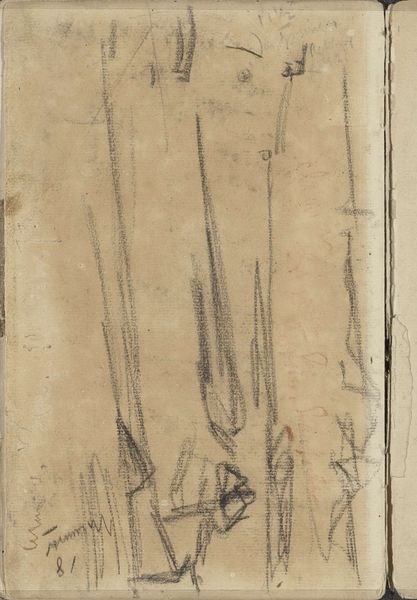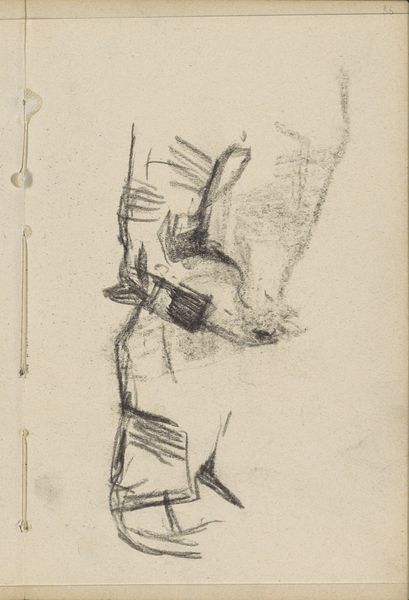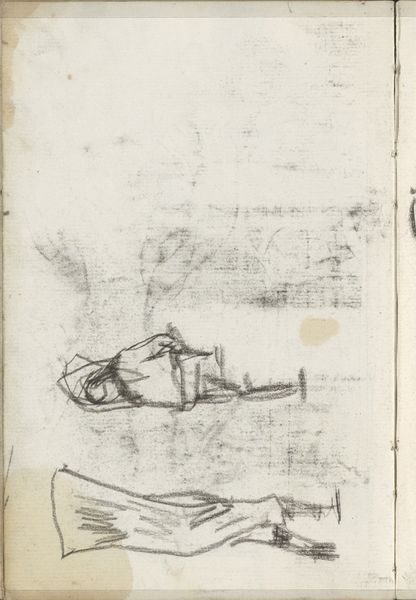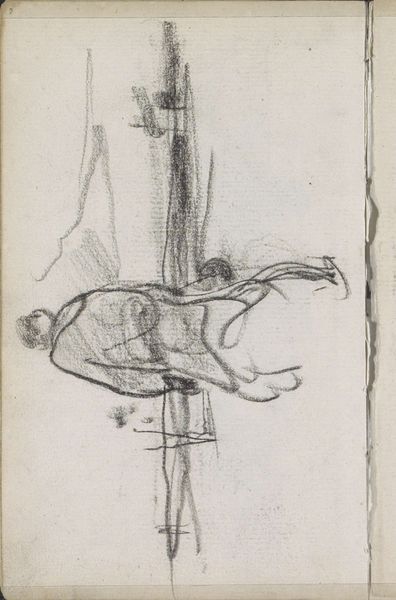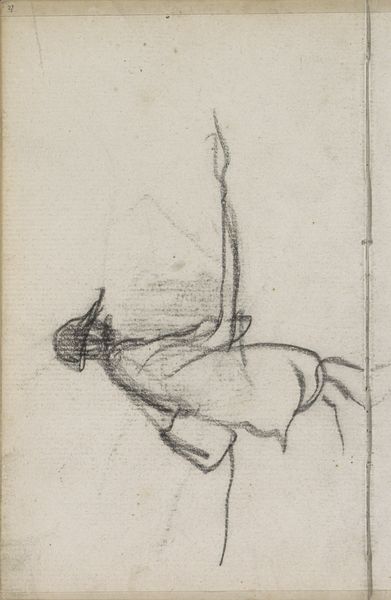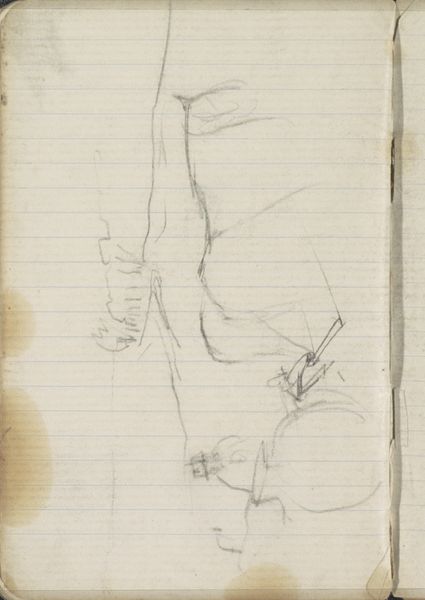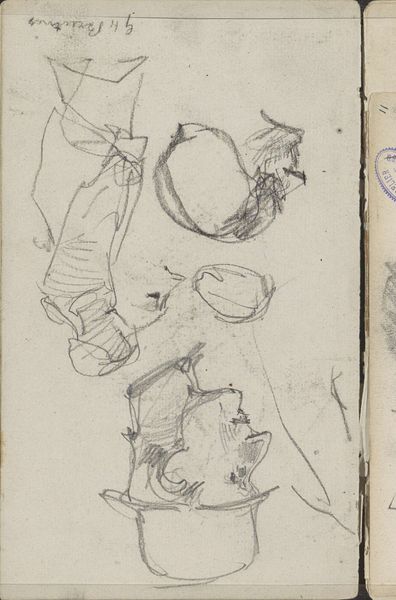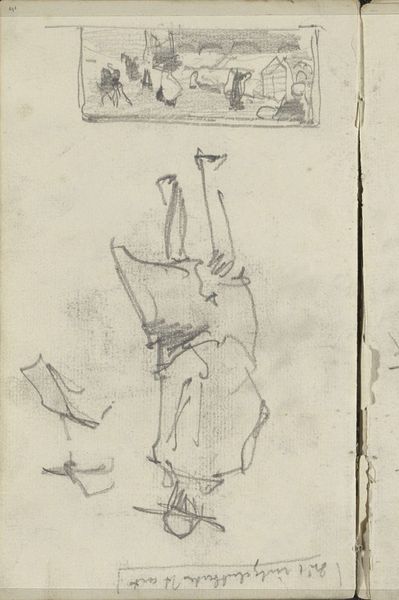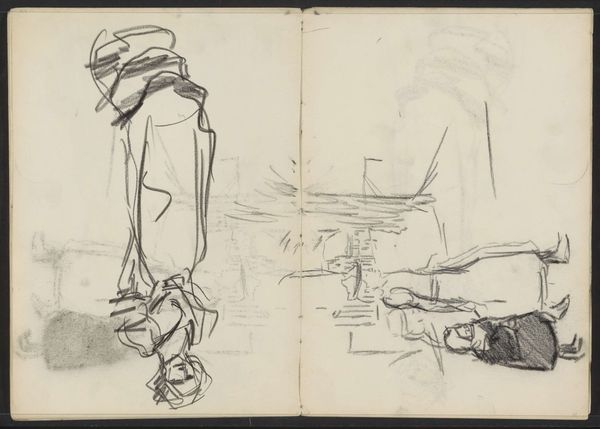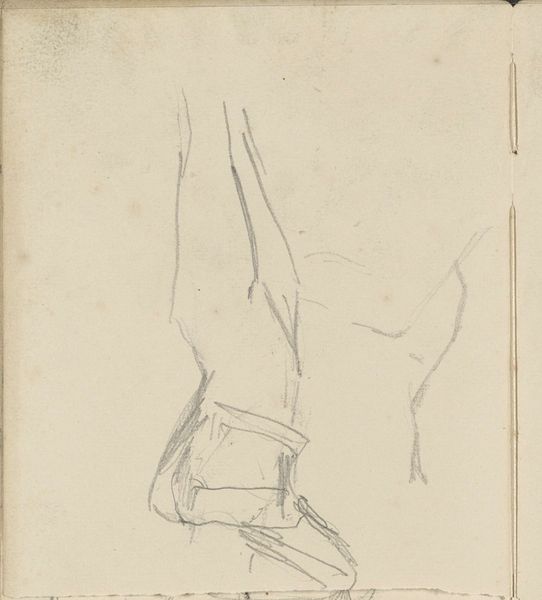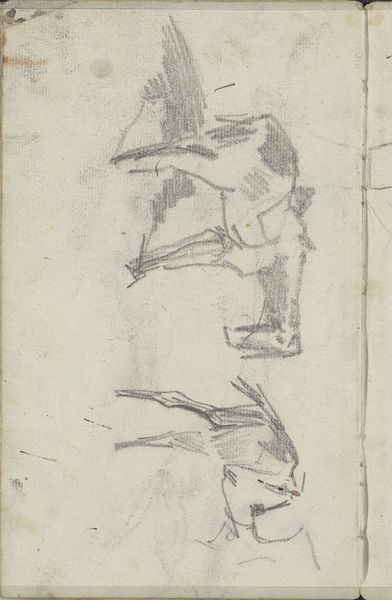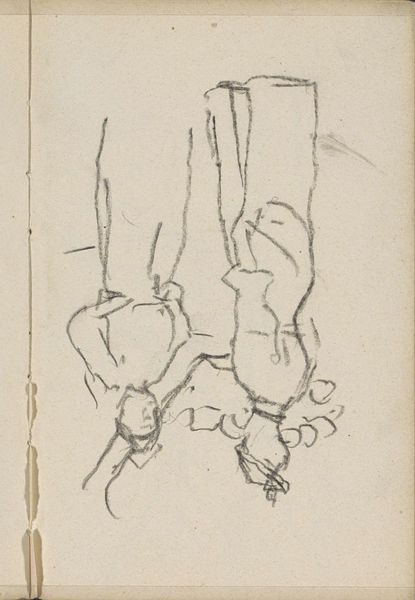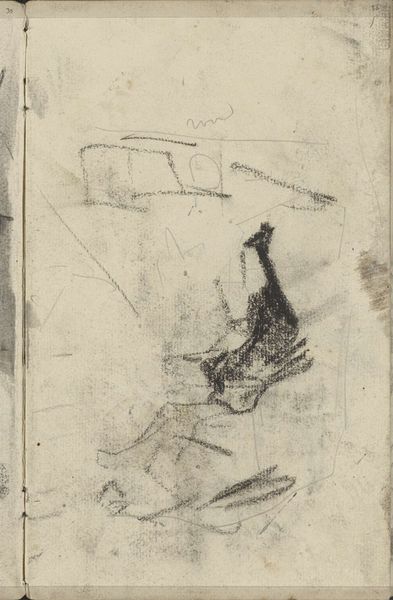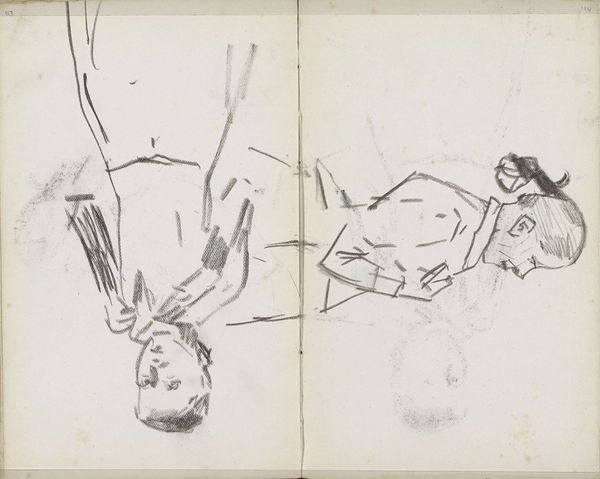
Copyright: Rijks Museum: Open Domain
Editor: This sketch is called "Paard en een man," or "Horse and a Man" by George Hendrik Breitner, created around 1896 or 1897. It's a pen and pencil drawing on paper currently at the Rijksmuseum. It looks like it was sketched directly into a notebook. What strikes me is how fragmented it feels; more like details or snapshots than a cohesive scene. What do you see in this piece? Curator: The fragmentation is key. Breitner, a key figure in Dutch Impressionism, was fascinated by the fleeting nature of modern urban life. He sought to capture its essence, its raw, unpolished reality. Drawings like this served as studies. Think of them almost as photographic snapshots. He was using photography himself, and these studies provided source material. Editor: So, it's not meant to be a polished depiction, but more of an impression? How did this tie into the artistic trends of the time? Curator: Exactly. This piece rejects the idealized and formally posed art of earlier periods. In Breitner's time, art was becoming more democratized. It was about the everyday experiences of ordinary people and about art reflecting modern urban conditions. The subject matter, a man and a horse, isn't particularly grand. Editor: Right, it feels very ordinary. A working man, a working horse… Did that make Breitner popular? Curator: While appreciated for his directness, Breitner's gritty depictions of Amsterdam weren't always embraced. Some critics found his work too unrefined, lacking the aesthetic refinement they were used to. However, he's an important example of how art was expanding in subject, media, and public purpose, influenced by both technology and a shift in political engagement and public discourse. Editor: That's fascinating! It's so interesting how something that feels unfinished can be so deliberately capturing a specific cultural moment. Thanks for sharing your insight! Curator: Indeed, looking closely at Breitner forces us to reconsider how we understand "finish" and its role in defining not just aesthetics but in determining how we relate to art and to everyday life.
Comments
No comments
Be the first to comment and join the conversation on the ultimate creative platform.
